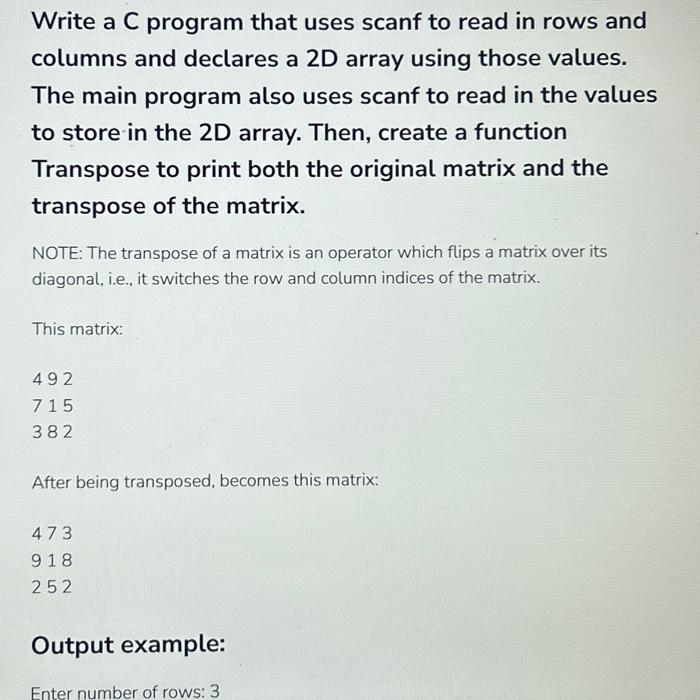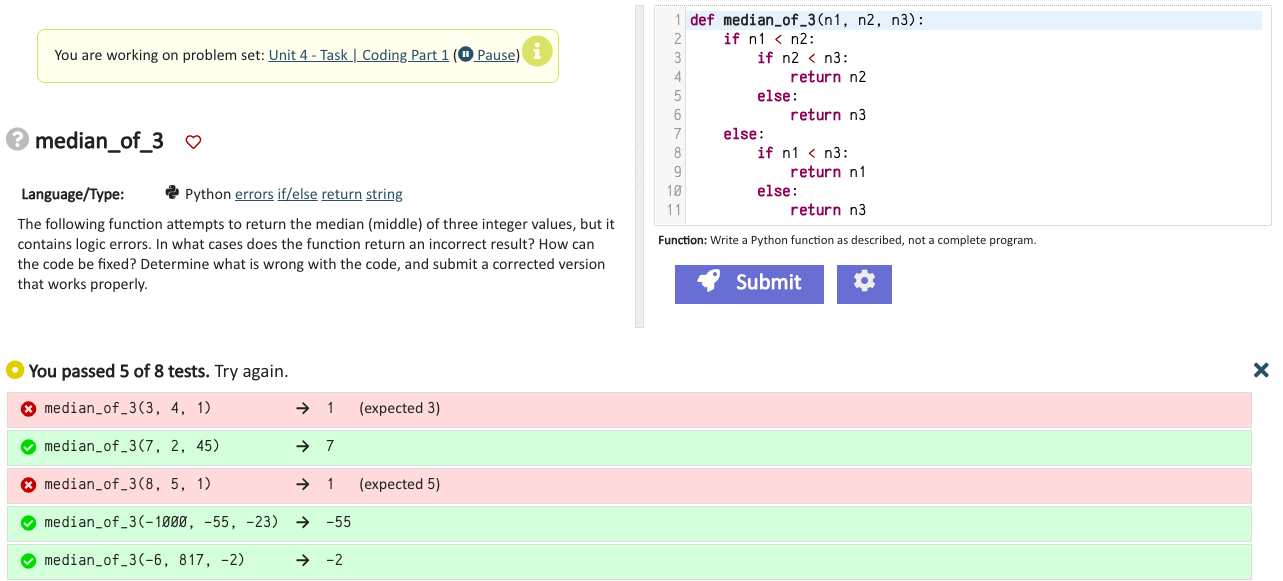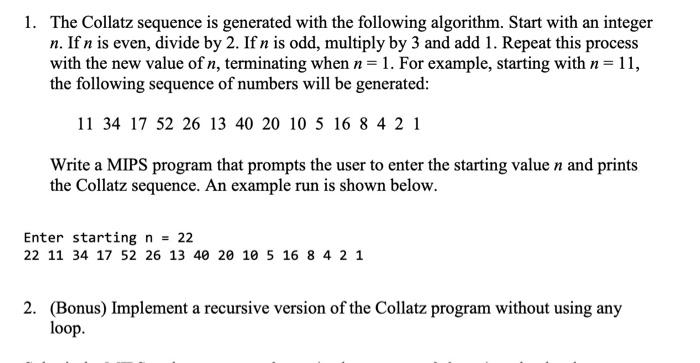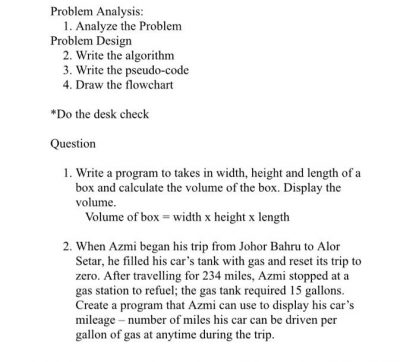Description
Write a Python function that takes as input three integers, M, N, and r, and returns an MN matrix of rank r. Create matrices of different sizes and ranks, and use numpy.linalg.matrix_rank() to verify the returned matrices have the desired rank.
Why should you expect a randomly generated matrix to have the rank you prescribe? What happens if you set r > min(M, N), and why does that happen?
def randrank(M, N, r):
A = random.randn(M, r)
B = random.randn(N, r)
return A.dot(B.T)
R = randrank(32, 41, 7)
print(R.shape, ‘n’)
print(LA.matrix_rank(R), ‘n’)
(32, 41)
7
(a) Use the function in Exercise #1 to generate a 5020 random matrix of rank r = 20, and visualize it.
(b) Find the SVD of the matrix in part (a) using numpy.linalg.svd().
(c) Reconstruct the MN 2D array s with the entries of along its diagonal and zeros everywhere else:
S = [s100000, s200000, sN00] if M > N, or
S = [s1000, s2000, sM000000] if M < N
(d) Verify that U.dot(S.dot(Vt)) recovers the matrix created in part (a).
(e) Repeat (a) – (d) for a randomly generated 2050 matrix of rank r = 20.


![Write a Python function that takes as input three integers, M, N, and r, and returns an MN matrix of rank r. Create matrices of different sizes and ranks, and use numpy.linalg.matrix_rank() to verify the returned matrices have the desired rank. Why should you expect a randomly generated matrix to have the rank you prescribe? What happens if you set r > min(M, N), and why does that happen? def randrank(M, N, r): A = random.randn(M, r) B = random.randn(N, r) return A.dot(B.T) R = randrank(32, 41, 7) print(R.shape, 'n') print(LA.matrix_rank(R), 'n') (32, 41) 7 (a) Use the function in Exercise #1 to generate a 5020 random matrix of rank r = 20, and visualize it. (b) Find the SVD of the matrix in part (a) using numpy.linalg.svd(). (c) Reconstruct the MN 2D array s with the entries of along its diagonal and zeros everywhere else: S = [s100000, s200000, sN00] if M > N, or S = [s1000, s2000, sM000000] if M < N (d) Verify that U.dot(S.dot(Vt)) recovers the matrix created in part (a). (e) Repeat (a) - (d) for a randomly generated 2050 matrix of rank r = 20.](https://gotit-pro.com/wp-content/uploads/2023/10/9d894064-eba6-456a-bd74-1f134ab849c5.png)









Mike Snyder –
Everything was completed on time and met my expectations.
Tad Summerfield –
Very impressive work and way ahead of time! Thanks!
Gordon Benton –
Great Work In Timely Fashion. Something what I wanted.
Alexander Turpin –
Tutor wrote it quickly and effectively. Great solution.
Julie Redd –
I really love the quality of the assignments. They are great so far. Accurate.